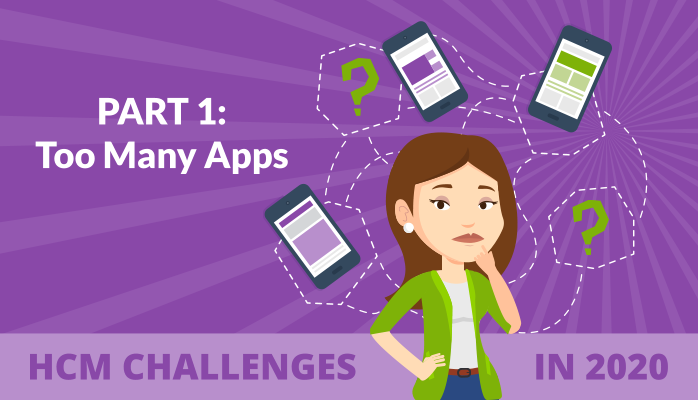“There’s an app for that” has become a common phrase today. In our personal lives, there is an app for just about everything, from ordering food, tracking fitness, and social networking, to even apps that aim at cheering you up. Many apps out there are designed to make life easier; however, there are many more that just consume your time.
In the business world, it’s not that much different. We are becoming overwhelmed with the technology options available to us. Every department has their own technology requirements and each purchase multiple solutions that meet their specific needs. For the HR department alone, software is needed to manage HR, payroll, benefits, time and attendance, recruitment, and learning management, for example. The challenge is how do we manage all of this technology?
Often software solutions are purchased at different times and from different vendors, creating challenges with managing all of these disparate systems and enabling them to work together. It is critical that there is a sound technology architecture in place to be able to host a wide variety of solutions and handle future technologies as they become available.
Vista’s product design and future technology direction are based on the understanding that an effective HCM is the central repository for a company’s most critical resource—its employees. The best HCM solutions offer the right combination of technology and functionality and allow employees from various departments to do their jobs better.
Built on an open architecture, Vista’s safe and secure platform, which is offered in both cloud-based and on-premise options, provides users peace of mind knowing that their data is readily available and, at the same time, only accessible by authorized users.
If you think about it, an organization’s employees are its most valuable resource. Therefore, the HCM database should be the central repository for information. It should provide the most up-to-date directory in a network infrastructure, be interconnected and feed into other systems, such as email, network and any other system containing employee information.
The best HCM solutions include tools to easily extract, transform, and load data to simplify the nuances of passing data files to internal and external systems, and better manage incoming and outgoing data flows within the HCM space. Vista includes an interface toolset that provides a configurable tool to define data imports/extracts using SQL; transform the data by manipulating and formatting the output; generate fixed-length, variable-length, HTML, or XML formats; schedule interfaces to automatically process when you need them to; share the results easily via email; and maintain data security by using your predefined Vista security.
Vista’s open architecture also allows for easy integration of third-party data. Vista’s APIs, which specify how software components interact, provide the necessary framework to enable other third-party solutions to interact and easily exchange data. Vista Time is a perfect example of this. Data is seamlessly exchanged as users interact with Vista and Vista Time. This same type of bridge between systems can be used to seamlessly integrate applicant tracking, compensation management, onboarding, corporate wellness, workforce planning, meeting software, and other corporate tools with Vista.
There is no one software solution out there that can handle it all, so there is no option but to purchase software from multiple vendors. The key is to identify solutions that have open architectures that make it easy for the varying systems to talk to each other and simplify your processes. Vista does just that. Its open architecture enables our customers to streamline their workflow from one system to another easily sharing data and eliminating the inefficiencies that comes from having multiple solutions.
Click here to read the next article in this series—HCM Challenges in 2020: Preventing Burnout by Engaging Employees.

